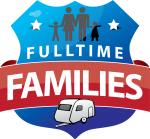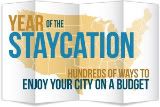This article was originally posted on my original blog.
Okay, I have to admit that I struggle a bit in this area. Not that I don’t select the right programs, I do, I just tend to buy too much! And then, I feel guilty because I don’t use everything that I have. I suspect this year will be a bit different. I don’t have the extra room for storage, unless I plan to use my books as pillows. Don’t laugh…this could be a real possibility. Right now, I have a huge Rubbermaid tub sitting outside the door of our camper, full of books and curricula, because we don’t have room for it inside. At least, not when our motor home is parked. I just haven’t been able to bring myself to part with the contents, though I know that must be done and soon. So, I’m going to use the advice I give to people when I’m speaking and I’m going to make some good curriculum choices for our family this year as I narrow down our resources.
PRAY
The most important step to choosing curriculum is to pray. Several years ago, I read Ignite the Fire, Freedom is Real Education by Terri Camp when I was in a rut. It was an excellent book and I was so excited after I read it that I recommended it to everyone that I knew. This book helped me to realize that it was my duty to pray over the choices I made for our homeschool. I needed to pray and listen to the answers that God gave me when it came to the areas I needed to work on with my children. Could it be academics? Spiritual issues? Personal issues? When I began to listen, I was amazed how the Lord directed me and how much our homeschool changed.
CREATE GOALS
You should also come up with goals for your children and write them down. When you write them down, they become personal and real and when you’re really stuck, you can go back and read them over and over. When your child is finished with their home education, what do you hope they will have learned? Is your goal simply to have taught your child how to get by, for some children, the answer will be yes. They will just need the necessary skills to survive on their own. You may spend exuberant amounts of time teaching and reinforcing the skills that this child will need to function in society without you.
Do you plan for your child to go back to a public or private school setting at some point? You may want to follow a scope and sequence much like the schools use.
Do you have a child that is headed to the military or college? You’ll want to know the requirements before your child is ready to graduate. Many colleges now require 3years of foreign language. Now it’s not a big deal for your child to take that class later, that is certainly an option, but you will pay for it and it will certainly be much cheaper to pay for it now than later. You also need to make sure you are taking the right types of classes. General Science and General Math aren’t going to get you closer to that admission. Educate yourself so you don’t hinder your child later.
LEARNING STYLES
What about learning styles? Talkers, Watchers and Doers: Unlocking Your Child’s Unique Learning Style by Cheri Fuller by is an excellent introduction to auditory, kinesthetic and visual learning styles. Though it’s not written for homeschoolers specifically, and doesn’t give curriculum suggestions, it will give you some wonderful ideas that you can incorporate in your home when teaching to different learning styles and bends. And, if your child doesn’t learn quite like everyone else, you’ll be encouraged to read the chapter about famous people that struggled and yet succeeded. A must read!
This past spring, the kids and I visited Ivy Green, Helen Keller’s Birthplace. While we were there, the docent told us the story of the day that Annie Sullivan made an incredible breakthrough at the water pump. By pumping water into Helen’s hand while simultaneously signing the word w-a-t-e-r, a light suddenly went off in the young girl’s head. Helen finally understood. Helen was blind, she couldn’t learn visually. She was deaf, she couldn’t learn auditorily. But she could feel. She could touch. And her teacher used that mode to get through to her. That day, Helen learned 30 other words and from that moment, she was no longer trapped in that dark world. Don’t we want that for our children? We want that light to go off in their heads. We want them to be successful.
INTEREST BASED
When my child was three and we began working on learning the alphabet, he could have cared less. He was not at all interested. I’d get picture books from the library about the ABC’s, I’d color with him in coloring books with letters, and he just didn’t care. He wanted to spend all his time playing with his toy dinosaurs. So, my mom found a dinosaur book that had a dinosaur for every letter in the alphabet. It wasn’t long before he not only knew the alphabet, but had also learned all those dinosaur names as well. I’ll never forget A for Apatosaurus, B for Brachiosaurus, C for Ceratosuarus (though this doesn’t say the hard “c” sound) D for Diplodocus …my child now amazed everyone when he was playing with his felt board or plastic dinosaurs because he was so tiny and had memorized all those incredibly hard words. The experience also taught me that if my child was interested in a subject, he would learn easily and the teaching was no longer a struggle. My advice? Teach to your child’s interests. You’ll save yourself some frustration and your child will retain what they’ve learned a lot longer.
Finally, remember that you don’t have to teach your child everything there is to know. That’s impossible. But you should teach your child how to learn. Learning doesn’t end with the last day of 12th grade or with that last day of college. Learning should be a lifelong process. Give your child the skills and tools they will need to find the answers on their own. My husband has always told me, if the kids can read, they can learn anything. What fabulous advice. He is so right!
How do you choose curriculum?
Thursday, October 1, 2009
Subscribe to:
Post Comments (Atom)



























I like that prayer is the first consideration on your list. I agree!
ReplyDelete